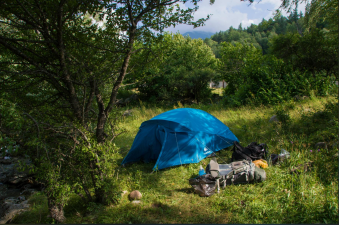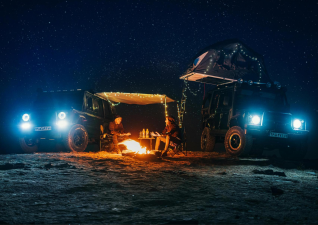Pre-Trip Prep: Lay the Groundwork
Before hitting the road, these steps prevent disasters.
· Check restrictions first: Apps like Recreation.gov or park websites flag fire bans (common in dry seasons) and bear-proof container requirements (mandatory in Yosemite and Rockies backcountry).
· Pack smart: Include a NOAA weather radio (for storm alerts), EPA-approved water purifier (LifeStraw or Aquamira tablets), and a first-aid kit with blister pads and emergency whistle (3 blasts = distress signal).
· Map your route: Download topo maps of your trail—cell service fails fast in remote areas like the Appalachians. Mark water sources and campsites; practice using a compass at home.

Setting Up Camp: Comfort Meets Safety
A well-built camp balances coziness and caution.
· Choose the right spot: Avoid low-lying areas (flash flood risk) and stay 200+ feet from streams. Clear debris before pitching your tent—rocks under the floor ruin sleep.
· Pitch with purpose: Stake tents at 45-degree angles, use guylines in wind, and test rainflies for leaks. For bear country, set up cooking zones 100+ yards from sleeping areas.
· Prep for dusk: Lay out gear while light lasts. Use red-light headlamps to preserve night vision, and pre-organize a kitchen bin with utensils and matches. Dig a 6-inch latrine pit 200+ feet from water for bathroom needs.
Staying Safe: Wilderness Survival Basics
Nature’s curveballs demand quick thinking.
· Fire sense: Build pits 6 inches deep, ringed with rocks, and clear 10 feet of dry brush. Drown ashes until cool—never leave embers. In fire-restricted areas, a portable stove is your best friend.
· Water wisdom: 3 million Americans get sick yearly from untreated water. Boil for 1 minute (3 at 6,500+ feet) or use filters. Treat Appalachian Trail water post-rain—bacteria spike.
· Weather smarts: Anvil-shaped clouds mean thunderstorms—seek shelter immediately. A sudden cold wind often signals rain; pack layers (moisture-wicking base + windproof outer) for mountain chills.
· Wildlife know-how: Store food in bear-proof containers. Raccoons and squirrels sneak into soft coolers—hard-sided bins work better. Keep 25+ yards from most animals, 100+ from bears.

Leaving No Trace: Protecting the Outdoors
Preserve the wilderness for future trips with these habits.
· Pack out all trash—even banana peels (they decompose slowly in wilderness soil).
· Stay on marked trails to avoid damaging fragile ecosystems, especially in sensitive areas like the Smokies.
· Bury human waste 6–8 inches deep, 200+ feet from water. Use biodegradable soap far from streams.
Master these phases, and you’ll turn any camping trip into a smooth adventure. The outdoors rewards preparation—so gear up, stay alert, and savor the journey.













